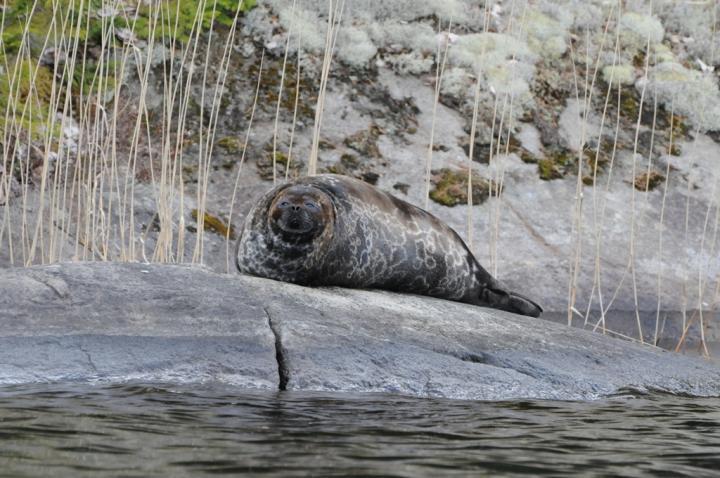The critically endangered Saimaa ringed seal, which inhabits Lake Saimaa in Finland, has extremely low genetic diversity and this development seems to continue, according to a recent study completed at the University of Eastern Finland. In her doctoral dissertation, Mia Valtonen, MSc, analysed the temporal and regional variation in the genetic diversity of the endangered Saimaa ringed seal. The population is only around 300 individuals divided into smaller sub-populations and with very little migration among between them.
The study developed a method allowing the identification of individual Saimaa ringed seals on the basis of a DNA sample, and showed that placentas collected from birth-lair sites are suitable for the genetic monitoring of the population. The data of the study comprised tissue samples taken from discovered carcasses of Saimaa ringed seals and placentas collected from birth-lair sites, as well as reference samples taken from Baltic ringed seals and Ladoga ringed seals.
Lowest genetic diversity among seals
Ringed seals began to inhabit the Baltic basin after the last glacial period. As a result of post-glacial rebound, ringed seals also ended up landlocked in lakes such as Saimaa and Ladoga. The study showed that during its nearly 10,000 years of isolation, the Saimaa ringed seal has lost the majority of its original genetic diversity. During the past century, human activity – for example hunting, fishing and habitat pollution – has caused a drastic decline in the population and increasingly decreased its genetic diversity.
The study found that the genetic diversity of the Saimaa ringed seal is lower than in any other seal population in the world, and that this diversity continues to decrease. In comparison, the Ladoga ringed seal, whose population size is ten times higher than that of the Saimaa ringed seal, has maintained its genetic diversity at nearly as high a level as marine ringed seals. The results are based on analyses of mitochondrial and microsatellite DNA variation in the Saimaa ringed seal, the Ladoga ringed seal, and the Baltic ringed seal.
Isolated populations don't mix
The study discovered significant genetic differentiation among the breeding areas of the Saimaa ringed seal, which means that the population is fragmented into smaller sub-populations. This is a surprising observation, because the Saimaa ringed seal is a very mobile mammal and the distances in Lake Saimaa are very short in comparison to the sea environment. In marine environments, only weak differentiation between ringed seal populations living thousands of kilometres apart has been observed.

This is a Saimaa ringed seal.
(Photo Credit: Mervi Kunnasranta)
The division of the Saimaa ringed seal population into smaller sub-populations is caused by a fragmented habitat, small population size, and different behavioural patterns. Female Saimaa ringed seals exhibit fidelity to their natal area and they have a tendency to stay in that area for breeding. Male Saimaa ringed seals, on the other hand, are more prone to disperse; however, not enough to maintain the genetic uniformity of the population.
Placenta reveals a pup's DNA
Genetic methods and samples which can be collected without capturing or even seeing the animal make it easier to monitor species that are few in number, evasive, and endangered. The study developed a genetic method which allows the identification of individual Saimaa ringed seals. Furthermore, the study tested the usability of placentas collected from birth-lair sites as a source of genetic information.
It was discovered that the DNA of a pup can be reliably extracted from the umbilical cord, allowing the placenta to serve as the pup's DNA sample. A later comparison between a DNA sample taken from an individual ringed seal in the wild and a DNA sample from the placenta makes it possible to determine the ringed seal's birth site and to obtain information about how it has dispersed.
Translocations would increase gene flow
Genetic diversity is an indicator of a species' ability to adapt to environmental change. Small and fragmented populations lose genetic diversity faster than larger, uniform populations. A specific concern for the Saimaa ringed seal is the fact that the small population is divided into even smaller sub-populations, and that the decrease of the genetic diversity in the Saimaa ringed seal seems to continue.
The best way to prevent further decrease in genetic diversity is to drastically increase the overall population size. Moreover, translocations of Saimaa ringed seals in order to increase gene flow between the different parts of Lake Saimaa should also be considered as a short-term measure. The significance of genetic methods in the monitoring of seal populations and in the evaluation of the success of conservation efforts will become increasingly important in the future.
Source: University of Eastern Finland